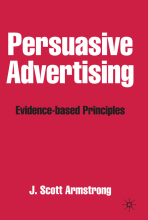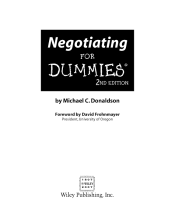Decisions - Imperfections in consumer judgments
7 important questions on Decisions - Imperfections in consumer judgments
Why are judgments and interpretations of consumer not entirely logical or factual?
Consumers do not analyze information precisely. Rather, to save time or mental effort, the human mind interprets information quickly and intuitively.
Name six notable imperfections
1) Framing effects
2) Heuristics as biases
3) Mental accounting
4) Top-down versus bottom-up customization
5) Inference making
6) Satisficing
Three heuristics that produce significant biases in how humans make judgments:
1) Availability heuristics
2) Representative heuristics
3) Anchoring and adjustment
- Higher grades + faster learning
- Never study anything twice
- 100% sure, 100% understanding
How can you overcome representative heuristics?
- Pay attention to base rate information
- Avoid the tendency to give more weight to case histories/anecdotal evidence over statistics
Explain anchoring and adjustment heuristics.
Consumers use pre-existing information as an anchor to evaluate subsequent information.
Anchoring bias dictates that our estimates of any property are biased by and toward the initial value information we have.
Why does top-down customization results more often in a loaded version of a product than the bottom-up process?
- Cognitive effort: adding and deleting options take cognitive effort (consumers have to think each option).
- Anchoring effect: starting price acts as an anchor/comparison point, from which consumers judge how much they have moved.
Marketers must balance the following opposite effects:
- Fully loaded version offering; consumers are likely to buy a 'more-features' version
- Higher initial price might discourage some consumers at the outset.
Three approaches to inference making:
- Inter-attribute inference: value of one attribute is inferred based on another attribute.
- Evaluative consistency: missing attribute is assumed to conform to the overall evaluation of the band.
- Negative cue: treat the missing information as a negative cue and then either avoid the option or assume a low or poor value on the attribute.
The question on the page originate from the summary of the following study material:
- A unique study and practice tool
- Never study anything twice again
- Get the grades you hope for
- 100% sure, 100% understanding































